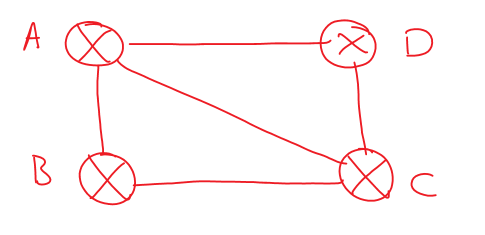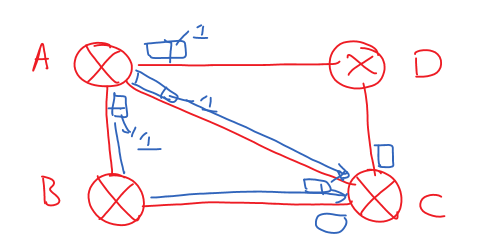Flooding in Computer Networks
For Complete YouTube Video: Click Here
In this class, we will try to understand Flooding in Computer Networks.
We have already discussed the concepts of Distance Vector Routing in our previous classes.
Table of Contents
Flooding in Computer Networks
Flooding is a non-adaptive routing technique.
The distance vector routing algorithm is an adaptive routing technique because the routers will dynamically adapt to the changes that occur in the network.
In flooding, data packets are sent to all the outgoing links except the one it has arrived.
To understand this, we will consider the network as shown below.

For example, router A wants to transmit the data to C.
The data packet will get flooded to all the interfaces as shown below.

Similarly, the packet received at other routers will get flooded to all the interfaces except the one from which it has arrived.
The router will accept the packet as the packet is received at the destination router C.
The disadvantage of this routing technique is that the bandwidth of the network is used to flood the packets.
Types of Flooding
There are two types of flooding.
- Uncontrolled Flooding
- Controlled Flooding
Uncontrolled flooding: Each router unconditionally transmits the incoming data packets to all its neighbors.
The above discussed technique is uncontrolled flooding.
Controlled flooding: They use some methods to prevent the transmission of packets to the neighboring nodes. The popular algorithm for controlled flooding is Sequence Number Controlled Flooding (SNCF).
The Sequence Number Controlled Flooding (SNCF) uses the sequence number to control the flooding of the packets.
Each packet in the transmission is assigned a sequence number as shown below.

Each router will maintain the details of the IP address of the source host, and the sequence number of the packet arrived.
If the same packet again arrives at the router, it will be discarded and will not get flooded into the network.
This way, the Sequence Number Controlled Flooding (SNCF) will help in controlling the data.
